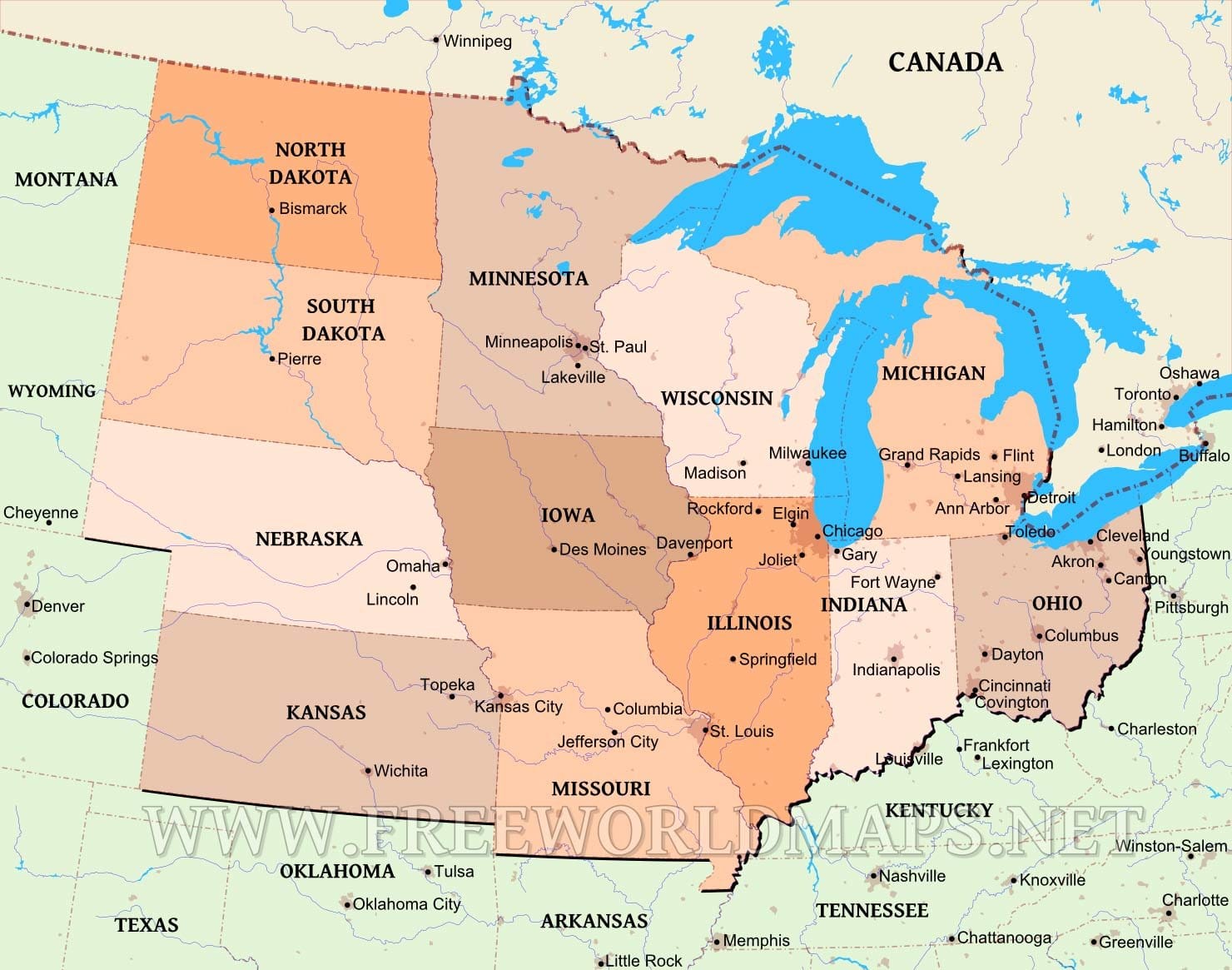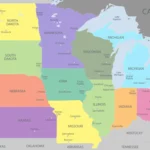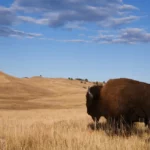Often referred to as “America’s Heartland,” the Midwest is a region closely entwined with the identity, past, and economy of the country. Though its precise limits might cause controversy, its influence on American industry and culture is indisputable.
Brief Notes:
Includes twelve U.S. states, mostly in the nation’s middle northern region.
Renowned for its agricultural supremacy, it came to be known as the “breadbasket of the U.S.”
Enjoys a continental temperature with hot, humid summers and sometimes severe winters.
Comprises the Mississippi River, the Great Plains, and the Great Lakes.
Major cities include St. Louis and Chicago, the biggest in the area.
The Midwest: More Than Only Geography
Defining the Midwest transcends a mere state-listing exercise. This region embodies a sense of place, values, and history.
The “Heartland” image: Often linked with classic American ideals, a strong work ethic, and a feeling of community is the Midwest. Over time, this picture has been both revered and questioned.
The “Official” Definition: The Midwest, according to the U.S. Census Bureau, comprises Illinois, Iowa, Ohio, Minnesota, Wisconsin, North Dakota, South Dakota, Nebraska, Kansas, Missouri, Arkansas, and Oklahoma.
Blurred Lines: Still, asking people to define the Midwest usually elicits different responses. Some include areas of Pennsylvania or perhaps Colorado, underscoring the arbitrary character of geographical limits.
Forming a Region: History and Influences
Different historical events and cultural inspirations have helped to define the Midwest:
Westward Expansion: The Midwest provided the portal for westward migration in the 19th century. The rich soil drew immigrants, and the area grew to be a vital component of the country’s development.
Industrial Powerhouse: Driven by its many natural resources, strategic position, and creative energy, the Midwest was instrumental in the Industrial Revolution. Cities like Chicago grew to be significant industrial centers.
Native American Heritage: The Midwest is rich in Native American heritage. For millennia, numerous tribes have called the area home, leaving their traces on the land and its customs.
The Great Migration: The flood of African Americans from the South during the Great Migration profoundly changed the Midwest’s cultural scene, particularly in areas like Chicago.
Defining the Midwest: Continual Discussion
Defining the Midwest is still a hot topic today.
Beyond the Stereotypes: One must see the complexity of the area and go past oversimplified preconceptions. The Midwest is not a monolith; it is a place of many experiences, cultures, and viewpoints.
Re-evaluating History: Historians and academics keep reevaluating the past of the Midwest, emphasizing sometimes disregarded stories and providing a voice to underprivileged groups.
Evolving Identity: The Midwest’s sense of identity changes as it works through political divisions, economic upheavals, and social transformation.
The Midwest ultimately defies simple description. It is a familiar yet always changing territory. Whether molded by its wide plains, energetic cities, or rich history, the Midwest is a vital component in the often shifting jigsaw of American identity.
- Amazing March Fun Facts: Unveiling History & Celebrations - April 15, 2025
- Master how to write height: A complete guide - April 15, 2025
- How High Are Your Standards Test: Find Your Perfect Match Now - April 15, 2025
















